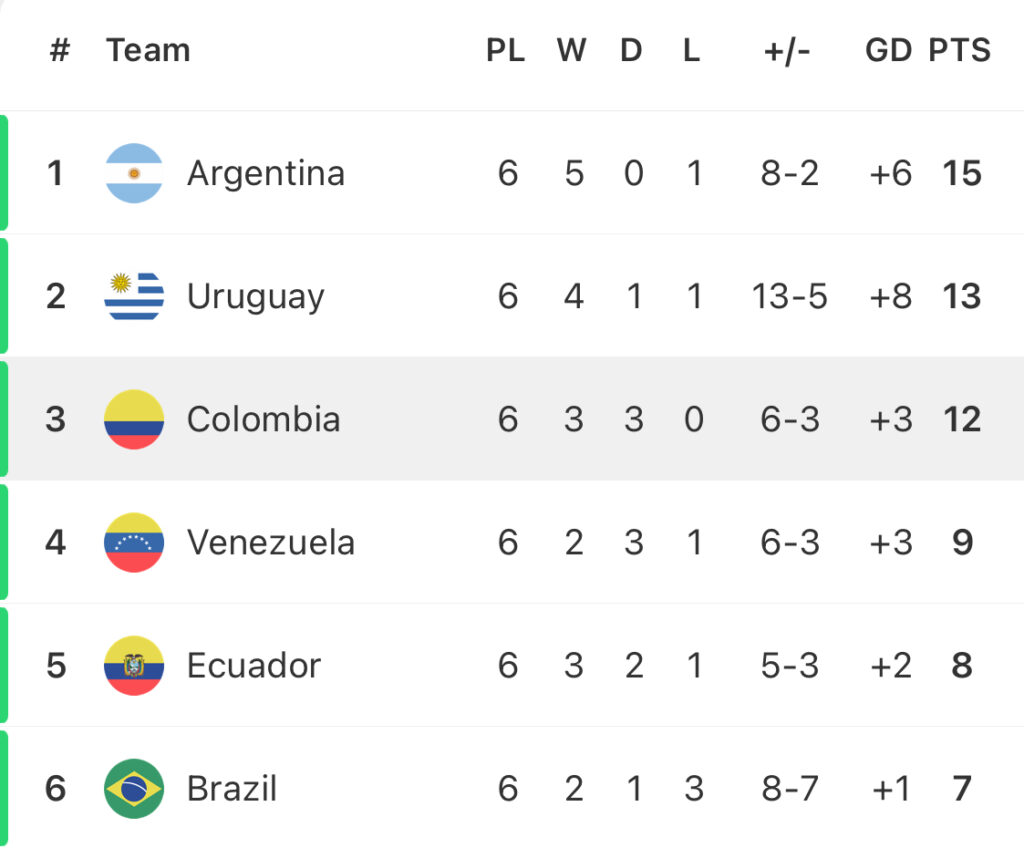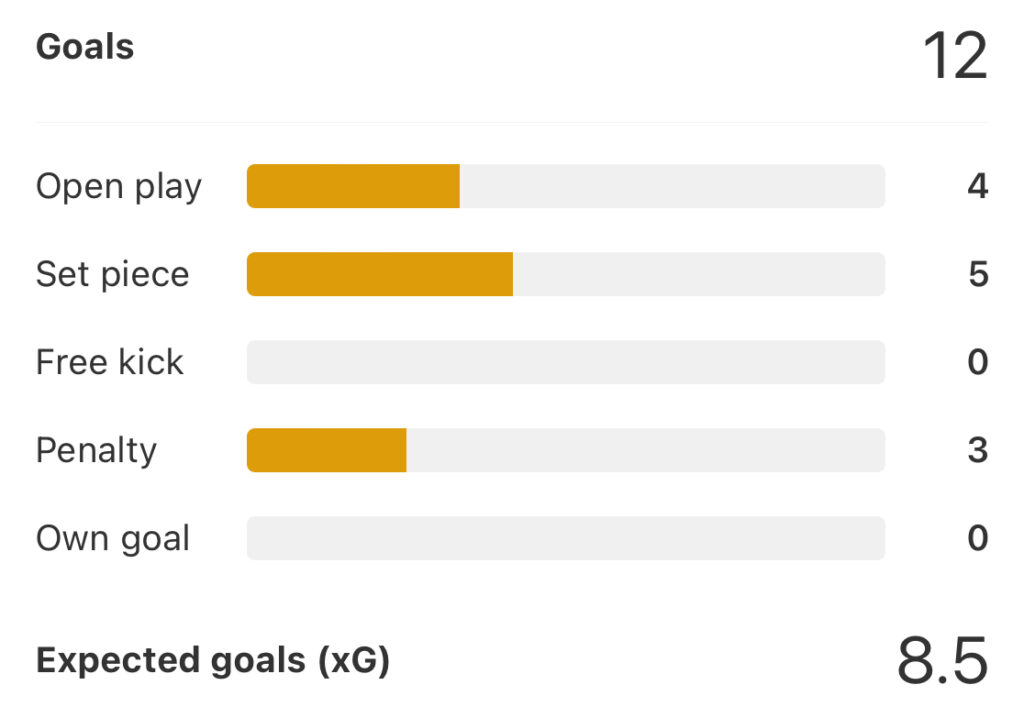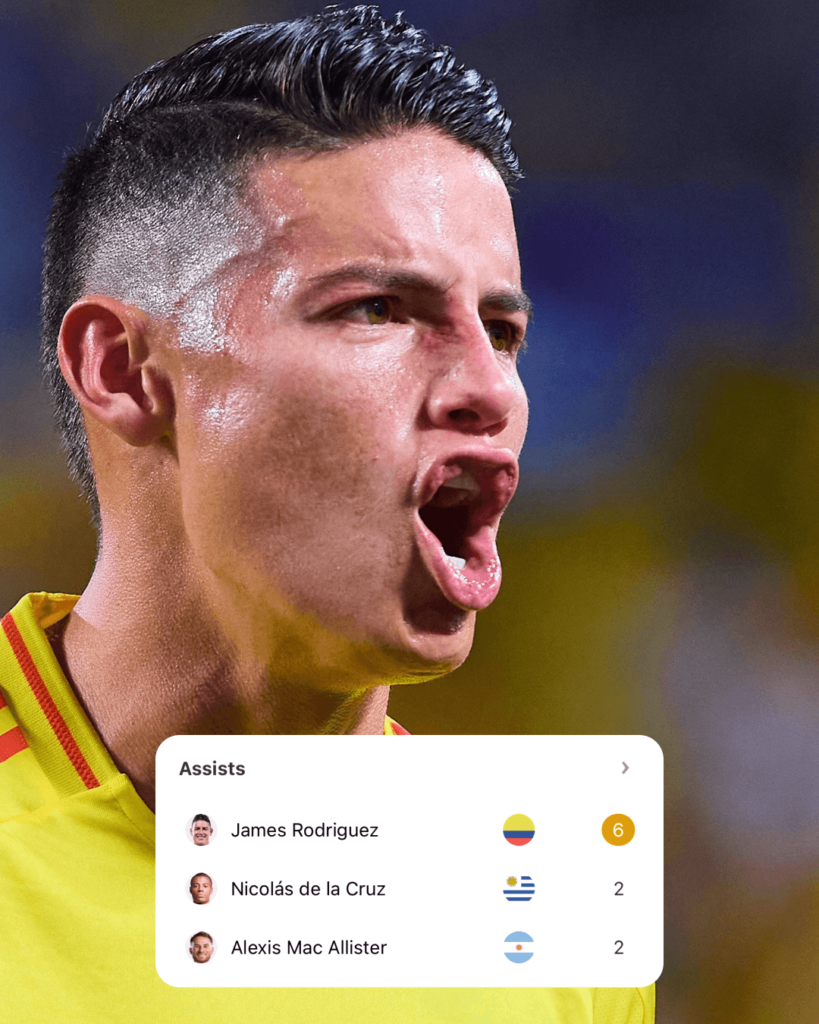How Néstor Lorenzo Turned the Tide for Colombia
On July 6, 2021, Argentina faced off against Colombia in the Copa América semi-final. Argentina got off to a quick start as Lionel Messi found Lautaro Martínez for the opener within seven minutes, but Los Cafeteros would respond on the hour-mark as Luis Díaz latched onto a long ball, rode the contact from his opponent, and delicately placed the ball into the side-netting. After both teams failed to find a goal in the remaining 30 minutes, the match went to a shootout, where Emiliano Martínez would come up clutch from the spot by producing three saves in São Paulo and willing the Albiceleste to a 3-2 win on penalties.
By Zach Lowy
Colombia would go on to beat Peru 3-2 in the third-placed match, whilst Argentina beat Brazil 1-0 in their own backyard to claim their first major trophy since 1993, kicking off a golden period that has seen them win their first World Cup in 36 years and reach back-to-back Copa América finals.
Argentina have the chance to follow in the footsteps of Spain 2008-2012 and win three major tournaments in a row, and they’ll be taking on Colombia in Miami in a Copa América Final that will pit two of the most in-form teams in world football against each other. Whilst Argentina have won all but two matches in regulation since their World Cup victory – a penalty shootout win vs. Ecuador in the Copa quarter-finals and a loss to Uruguay in World Cup qualifying – Colombia boast the longest unbeaten streak in the world. Their last defeat came on February 1, 2022 in a 1-0 loss to Argentina that saw Lautaro Martínez open the scoring within a half-hour. Colombia would bounce back by closing out their World Cup qualifying campaign with victories against Bolivia and Venezuela, but it was too little, too late: the damage was already done.
Darkest Before the Dawn
Colombia returned to the World Cup in 2014 after a 16-year absence and reached the quarter-finals, where they would lose to hosts Brazil, and they would follow it up by making the Round of 16 in 2018 and losing on penalties to England. But after making their mark in Brazil and Russia, Colombia would miss out on the 2022 World Cup after a dreadful second half of 2021 which saw them draw to Bolivia and Paraguay and beat Chile, before failing to score in their next seven competitive matches. Whilst Argentina, Brazil, Uruguay, and Ecuador booked their ticket for Qatar, Colombia would watch from the sidelines. It seemed that La Tricolor’s golden generation had run its course.
Desperate for a fresh start, the Federación Colombiana de Fútbol parted ways with Reinaldo Rueda and hired Néstor Lorenzo, who became the fifth Argentine to manage the Colombia national team. Lorenzo got off to a strong start with friendly wins against Guatemala, Mexico and Paraguay before drawing to the US and South Korea, and his Cafeteros would build on that momentum by beating Japan, Iraq and Germany. However, he would have to wait 14 months before overseeing his first competitive fixture with Colombia on September 7, 2023, with Rafael Santos Borré scoring immediately after the restart and paving the way for a 1-0 win vs. Venezuela.

Three straight draws against Chile, Uruguay and Ecuador would follow before Colombia made their first real statement victory under Lorenzo, erasing an early deficit and winning 2-1 via a late brace from Díaz to secure just their second win against Brazil in the past 33 years. Borré would kick off proceedings with an early penalty as Colombia pulled off a 1-0 win against Paraguay, a victory that puts them third in CONMEBOL’s table with one-third of the World Cup qualifiers being played (the top six head to the 2026 World Cup whilst seventh heads to the World Cup qualifying playoffs).
Los Cafeteros have won 12 of their last 13 matches and have advanced to the Copa América Final for the third time in their history. They lost in the 1975 final to Peru before returning in 2001, a tournament that was fraught with controversy and drama from start to finish. On July 1, CONMEBOL announced the cancellation of the tournament due to security concerns over host nation Colombia, only to immediately reverse its decision. This unexpected U-turn triggered two last-minute substitutions: Canada, having disbanded its training camp, would be replaced by Costa Rica, whilst Argentina pulled out over alleged terrorist threats to their players. Honduras were invited to fill their spot and made the most out of their opportunity by reaching the knockout stage, where they would pull off one of the greatest underdog runs in the tournament’s history by beating Brazil 2-0 in the quarter-finals and edging Uruguay on penalties in the third-place match. As for Colombia, they beat Peru and Honduras before seeing off Mexico 1-0 in Bogotá courtesy of Iván Córdoba’s second-half goal, sealing their first and only Copa América title.
Lorenzo’s Tactical Approach
Sometimes, you’ve got to hit rock bottom before you can reach the top. That’s proven true for Argentina, who had to suffer through three final defeats in three years before finally putting an end to their trophy drought in 2021, and that might just very well be the case for a Colombia side that finds itself just 90 minutes away from winning their first silverware since 2001. It was less than three years ago that Colombia couldn’t buy a goal, but today, they find themselves clicking on all cylinders and finding the back of the net for fun with 12 goals this tournament – no other team has more than 9. Bit by bit, Néstor Lorenzo has been able to transform Colombia into a well-oiled machine capable of holding down the fort defensively whilst also posing a formidable threat in the final third, but just how has he been able to do it? I spoke to Simon Edwards, an Englishman based in Medellín, Colombia who works as the South American Director for the ISC player agency.

“In terms of goals, I think there have been a couple of important factors. There has been a shift to a more dynamic approach with lots of positional interchanges. Out of possession, there is discipline and intensity in the press, but on the ball there is a lot more freedom. Quick, short passing combined with quick runners offering in behind makes Colombia unpredictable and really plays to the strengths of the side.”
“Wilmar Barrios had been a key man anchoring the midfield but he has not been included at the Copa América while other Russia-based players such as Jhon Córdoba and Jorge Carrascal have. I think this is because Lorenzo wants all his midfielders to be able to progress the ball and play with forward-facing creativity. He has managed the transition very well and the group looks very united. The style of play suits the Colombians very well and you can see how much they are enjoying playing together.”
“During the long run without scoring, all of the big chances fell to the 9. Colombia had some top strikers at that time, but it really put pressure on the centre forward to win the game with a more rigid structure. Now, the 9 [Córdoba] plays as a facilitator, leading the press but also with a more collective role, bringing others in and holding up the ball. This has been key in improving attacking output: Colombia win the ball higher and have more players arriving quickly in the box before the opposition can get set.”
Lorenzo’s attacking style of play has bore plenty of fruit for Colombia, whose 8.5 expected goals and 15 big chances are second only to Argentina (11.1 and 22), whilst their 6.2 accurate crosses per game are bettered only by Uruguay (6.6). Colombia have found the right balance in attack and managed to buttress their backline with an organized approach on and off the ball, and it could very well result in an epic victory in Florida. However, if they are to shock the world and come away with the title, they’ll need James Rodríguez to be at his very best.

James Rodríguez: The Man With a Plan
It has been one decade since James Rodríguez burst onto the scene for Colombia, guiding them to the last eight in Brazil and winning the World Cup Golden Boot with 6 goals. Since then, James has won two league titles apiece at Real Madrid and Bayern Munich, two UEFA Champions League titles with Real, as well as one Copa do Brasil title with his current club São Paulo. After a short-lived spell at Everton, the Colombian playmaker had seemingly fallen by the wayside, bouncing around from Qatar to Greece to Brazil, but he has nevertheless found a second wind in this Copa América and delivered a tournament for the ages. James (8.29) is FotMob’s second-highest-rated player of the tournament after Venezuela’s Jon Aramburu (8.52), whilst he leads all players for goal contributions (7), assists (6), and chances created (17). Only Federico Valverde (1.8) has more expected assists than Rodríguez (1.7), whilst only Lionel Messi (7) has created more big chances than him (5). Two days after turning 33, James will play the biggest match of his entire career as Colombia take on an Argentina side that is looking to surpass Uruguay with the most Copa América titles in history and secure a record 16th trophy.
Lorenzo has engineered a succession plan at Colombia with various veteran players like Wilmar Barrios, David Ospina and Radamel Falcao making way for younger options, but he’s nevertheless built his new-look team around James, whose national team exploits speak for themselves. His 90 appearances put him seventh amongst all Colombia players, whilst only Falcao (36) has found the back of the net on more occasions for Los Cafeteros than James (28).
10 years after making the move to Real Madrid for £63 million, where James became the most expensive Colombian player of all time and forced Ángel Di María to seek a transfer to Manchester United, James has the chance to spoil the final match of Di María’s international career and pull off an improbable victory in Miami. However, in order to do so, he’ll need to do something that no team has been able to achieve since Brazil on July 2, 2019: beat Argentina in a knockout round match at a major tournament.
Greater Than the Sum of their Parts
In contrast to Argentina, who boast a star-studded array of players from Manchester City, Liverpool, Manchester United and more, Colombia’s line-up will include just three footballers who are currently plying their trade in Europe’s top five leagues: Liverpool winger Luis Díaz, Villarreal left back Johan Mojica, and Crystal Palace midfielder Jefferson Lerma. Lerma opened the scoring in the 39th minute, rising above the defense and meeting James’ world-class delivery with a bullet header. However, Lerma’s club teammate Daniel Muñoz would throw Uruguay a lifeline before the break after elbowing Manuel Ugarte in the chest and receiving his second booking. Colombia were forced to dig deep, but they managed to hold on with 10 men and give Uruguay their first competitive defeat since September.
Colombia’s starting line-up will likely feature four players currently suiting up in the Brasileirão – Bahia’s Santiago Arias will fill in for Muñoz at right back, Fluminense’s Jhon Arias and Palmeiras’ Richard Ríos should compose the midfield alongside Lerma and Rodríguez, whilst Krasnodar striker Jhon Córdoba will lead the line. Galatasaray’s Davinson Sánchez and Genk’s Carlos Cuesta will form the central defensive pairing, whilst Atlas’ Camilo Vargas will start between the sticks.
“Out of possession, James plays centrally to coordinate the press with Díaz from the left and Córdoba moving to the right,” stated Edwards. “James isn’t a great defender but he is very intelligent and is effective at forcing mistakes. Behind that you have three midfielders with a lot of energy and aggression – Rios and Arias are very aggressive, sharp, tough and they snap into tackles, whilst Lerma is also athletic and defensively strong. This enables Colombia to defend on the front foot and force longer passes. The backline has plenty of pace to deal with that and they are strong in the air. Against Uruguay, they showed they can also stay compact in a deep block but generally, they have benefited from playing on the front foot and engaging higher up the field.”
From Mexico to Türkiye, from Belgium to Russia, these players have come from far and wide to represent Colombia in this summer’s Copa América. Rather than bask in the despondency of their 2022 World Cup embarassment, they have used it as a catalyst to turn their performances around and give Cafeteros fans something to cheer about. They have rode the wave of confidence and made it all the way to the finish line, and they have the chance to write their name into the history books and put an end to Argentina’s golden era.
(Cover image from IMAGO)
You can follow every game from Copa America live with FotMob — featuring deep stats coverage, xG, and player ratings. Download the free app here.